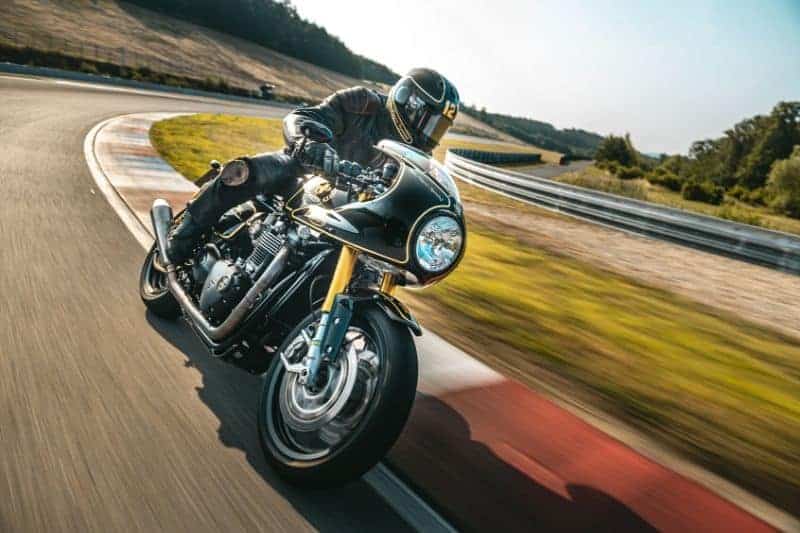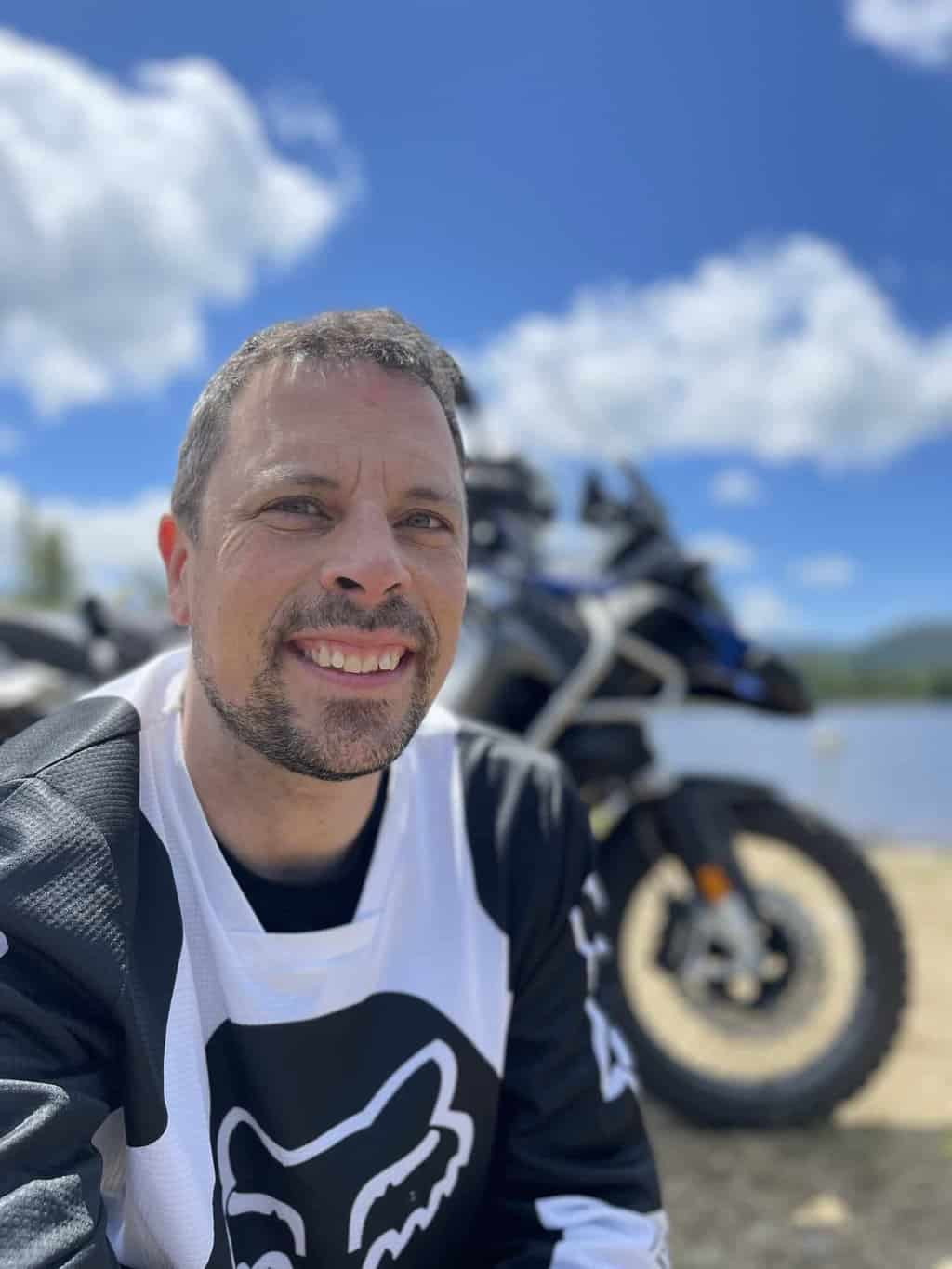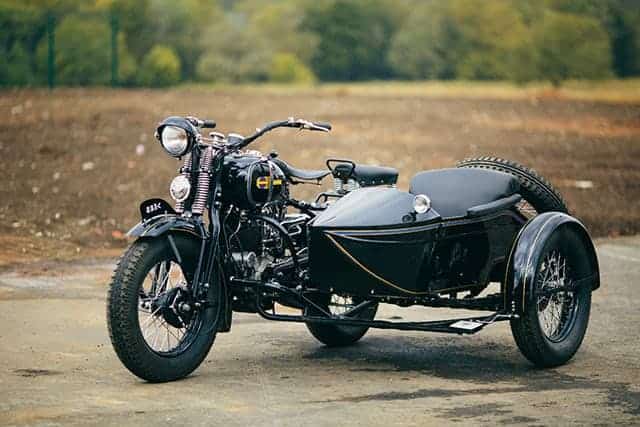One of the common questions many people have is how far a motorcycle can get on a full tank of gas. And this is not a coincidence since motorcycles have to be refueled more often. Motorcycles are not like cars, and the distance they can travel on a full tank is not the same.
How far can a motorcycle go on a full tank of gas? Most motorcycles can go between 120 to 200 miles on a full tank of gas. Sports bikes can typically go between 120 to 250 miles, while some touring motorcycles can go between 200 and 350 miles on a full tank of gas. Cruisers and dual-purpose motorcycles can go between 140 to 220 miles.
Table of Contents
Understanding how far you can get is a must as it can give you valuable insight into what you can expect and how well the motorcycle works. In this article, I will get into more detail about how far it is normal for a motorcycle to go on a full tank of gas.

How much distance can a motorcycle go on a full tank of gas?
How far a motorcycle can go on a full tank of gas is highly dependent on multiple factors. The two main factors determining the distance a motorcycle can travel are its fuel tank capacity and fuel consumption. (More on that in a bit.)
Both the fuel tank capacity and fuel consumption should be stated in the user’s manual. (Those numbers are not constants and will vary wildly.)
How far can a motorcycle go on the main tank?
Motorcycle fuel tanks can have a capacity between 2 to 10 gallons. The most common size of motorcycle gas tanks is usually between 3 to 6 gallons.
However, 0.25 to 0.90 gallons will be the reserve tank. This means that we can expect most motorcycles to have a main fuel tank capacity between 2.1 to 5.75 gallons.
As we have already seen, the motorcycle’s average mpg is usually between 35 to 60. Now, we need to calculate how many miles this can give us by multiplying the mpg by the main fuel tank capacity. Most motorcycles can go between 73.5 to 345 miles on the main fuel tank. (Before hitting reserve.)
How far can a motorcycle go on reserve?
Motorcycle fuel tanks are usually separated into two levels. The first level is when the fuel tank is considered full. The second level is the reserve level or the point at which the low fuel light will come on. This is when you should start worrying about filling up your motorcycle tank because you are running low on fuel.
The main tank and the reserve tank are all part of the same tank. The reserve is just used as a reminder to let you know that you need to refill your gas tank.
A reserve tank will usually hold between 0.25 to 0.90 gallons of fuel. And since motorcycles get between 35 to 60 mpg on average, this means that motorcycles can go between 9 to 55 miles on reserve.
See article: How far can a motorcycle go on reserve?
YourMotoVault database – Tank size by motorcycle
How far can a motorcycle go before the light comes on?
The moment the light comes on means that you’ve hit the reserve. So most motorcycles should be able to go between 73.5 to 345 miles before the light comes on.
How far you can go on a full tank will vary from motorcycle to motorcycle. When the light comes on will also differ from gauge to gauge. Even identical motorcycles may differ in their readings and actual mpg.
See article: Can you run a motorcycle on reserve all the time?
Probably one of the things that people don’t like is that they have to fill up their motorcycle gas tanks more often than they do with a car.
However, this is just one of the aspects of riding a motorcycle, and there is nothing strange in doing so.
See article: How often do you have to fill up a motorcycle?
25 Examples of how far a motorcycle can go on a full tank of gas
Before we start, let me stop you right here.
It is worth knowing that those numbers are averages taken by reviewing and researching some of the most popular motorcycles and their fuel tank capacity and fuel consumption.
- Honda CBR250R: 235 miles
- Honda NC700X: 240.5 miles
- Suzuki DL650 V-Strom: 290 miles
- Suzuki SV650S: 190 miles: 232 miles
- Kawasaki Ninja 300: 270 miles
- BMW R1200GS: 220 miles
- Honda PCX125: 235 miles
- Yamaha WR250F: 149 miles
- Suzuki DL650A V-Strom 650: 313 miles
- Yamaha FZS600 FZ6: 224 miles
- Harley Street Bob: 160 miles
- Triumph Sprint ST: 210 miles
- Honda CBR 1000RR: 150 miles
- Yamaha FZ09: 140 miles
- Yamaha YZF-R6: 150 miles
- Triumph Daytona 675: 160 miles
- Honda CBR600RR: 150 miles
- Ducati 899 Panigale: 160 miles
- KTM 640 LC4 Supermoto: 80 miles
- Honda NC700X: 240 miles
- Honda CRF250X: 55 miles
- BMW F800ST: 220 miles
- Suzuki Bandit 600: 200 miles
- Harley-Davidson VRSC: 120 miles
- Honda CB650SC: 140 miles
- Triumph Street Triple: 211 miles
- Triumph Tiger 1200: 210 miles
As you can see, the total miles a motorcycle can go before completely running out of fuel can vary a lot.
Many sports bikes will go between 120 to 200+ miles on a full tank of gas, while cruisers and dual-purpose motorcycles can go between 140 to 220 miles. Touring, adventure, and sport-touring motorcycles will usually be able to go further on a full tank of gas—up to 350+ miles.
Of course, there are some exceptions to the rule.
For example, the Royal Enfield Taurus is a diesel motorcycle capable of going up to 670 miles on a full tank of gas.
On the other hand, dirt bikes cannot really go very far, as they are not built to have a long-range, to begin with. Dirt bikes usually have smaller fuel tanks and fairly bad MPGs as well. Dirt bikes can go between 30 to 150 miles on a full tank of gas.
What affects how far a motorcycle can go on a full tank of gas?

Type of motorcycle
The fuel tank capacity and the motorcycle’s fuel consumption will have the biggest impact on how far it can go.
On average, motorcycles get between 35 to 60 mpg. But usually, 50 mpg is considered a good average when it comes to motorcycle mpg.
That being said, newer motorcycles usually get better mileage than older models; however, this may not always be true.
The size (or cc) of the motorcycle’s engine will also affect its fuel consumption. Generally speaking, an engine with a bigger size (more cc’s) will consume more fuel. That being said, you cannot really judge how far a motorcycle can go just by looking at its engine size (cc’s). As the cc’s do not really tell you the whole picture.
The next big thing that will determine how far you can go on a motorcycle is the fuel tank capacity. Motorcycles usually have fuel tanks with a capacity between 2 to 7 gallons between 0.25 to 0.90, of which will be the reserve.
You can, technically, try to squeeze more fuel in your gas tank, however, this is not recommended. Overfilling your gas can cause some problems and should be avoided.
See article: Can you overfill a motorcycle gas tank?
Riding style
The more aggressively you ride your motorcycle, the more fuel it will consume, negatively affecting its mpg. This will also negatively affect how far a motorcycle can go.
Usually, higher RPMs will mean lower MPGs.
On certain motorcycles riding reasonably can get you a good mpg between 45 to 55. However, if you really push it, it is normal for the mpg to drop significantly, in certain cases, as low as 20 to 30 mpg.
Terrain
The next big thing that will affect how far a motorcycle can go is the terrain where you travel. Certain terrains can be particularly unrelenting and difficult to traverse, significantly impacting the mpg.
There can also be a big difference in the motorcycle’s mpg if it’s being ridden on the highway vs. in the city. Because riding a motorcycle on the highway will usually be accompanied by higher speeds and rpm, motorcycles will usually get worse mileage than roads where lower speeds can be used.
In certain cases, riding on the highway can reduce the motorcycle’s mpg between 17 to 22%. Or, in other words, reducing how far the motorcycle can go between 17 to 22%.
Cold weather
It is worth noting that other factors can also affect your motorcycle’s mpg and thus affect how far it can go on a full tank of gas.
Colder weather will usually negatively affect fuel economy. The colder the weather gets, the worse will be the mileage of the motorcycle. The data from the U.S. Department of Energy, suggests that the difference in the mileage between driving a car at 20°F compared to 77°F can lower the mpg by 12 to 22%.
On the other hand, warm weather will positively affect the mpg.
Extra weight
The more weight a motorcycle needs to carry, the lower its mpg will get. According to one study, it was estimated that every extra 100 pounds on a vehicle could lower its mpg by 1%.
This also means that the rider will also affect the mpg of the motorcycle. For example, carrying one passenger will not affect your mpg as much as pulling a trailer.
Maintenance and care
The condition of the motorcycle will also affect its mpg.
Clogged or dirty filters, under-inflated tires, dirty carburetors, and more can all negatively affect the motorcycle’s mpg.
How to calculate how far a motorcycle can go on a full tank of gas?

To calculate how far a motorcycle can go on a full tank of gas, you need to multiply the motorcycle’s mpg by the amount of fuel (in gallons) in the motorcycle gas tank.
The amount of fuel in the tank (in gallons) x mpg = remaining travel distance (in miles).
For example, if we have a motorcycle that has a 3.5-gallon gas tank and averages about 55 mpg, we will get the following:
3.5 gallons x 55 mpg = 192.5 miles per full tank of gas.
Of course, this is what the motorcycle should get in theory. You also need to consider the fact that about 9 to 55 of those miles will be the reserve, so you should expect the light to come on at around 140 to 170 miles. In addition to that, other factors can also affect the real mpg of the motorcycle.
FAQ’s
How far can a motorcycle go on a full tank of gas?
- Most motorcycles can travel between 120 to 200 miles on a full tank of gas. Specific distances vary based on the type of motorcycle. Sports bikes typically achieve 120 to 250 miles, while touring motorcycles can reach 200 to 350 miles. Cruisers and dual-purpose bikes fall between 140 to 220 miles.
What factors affect how far a motorcycle can go on a full tank of gas?
- Several factors influence a motorcycle’s distance on a full tank, including its type, riding style, terrain, weather conditions, additional weight, and proper maintenance. Engine size, fuel tank capacity, and fuel consumption also play key roles in determining a motorcycle’s range.
How do you calculate how far a motorcycle can go on a full tank of gas?
- To calculate a motorcycle’s potential travel distance on a full tank of gas, multiply its average miles per gallon (mpg) by the fuel tank capacity in gallons. For instance, if a motorcycle has a 3.5-gallon tank and averages 55 mpg, the calculation would be 3.5 gallons x 55 mpg = 192.5 miles per full tank. It’s important to remember that about 9 to 55 miles may be reserved for emergencies, and real-world conditions can affect actual mpg.

Meet Simon, the 46-year-old aficionado behind YourMotoBro. With a lifelong passion ignited by motocross dreams and a Canadian Tire bicycle, Simon’s journey has been nothing short of extraordinary. From coaching underwater hockey to mastering muddy terrains, he’s an authority in thrill and adventure. Certified as an Off-Road Vehicle Excursion Guide and trained in Wilderness First Aid, Simon’s love for bikes is as diverse as his collection—from a robust BMW GSA R1200 to the memories of a Harley Davidson Night Train. By day a respected telephony consultant, by night a motorcycle maestro, Simon’s tales are a blend of expertise, resilience, and undying passion. ?️✨
